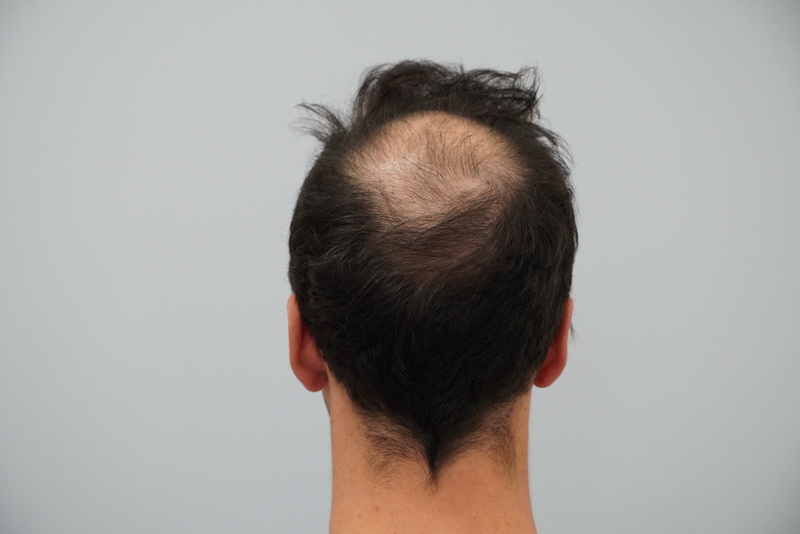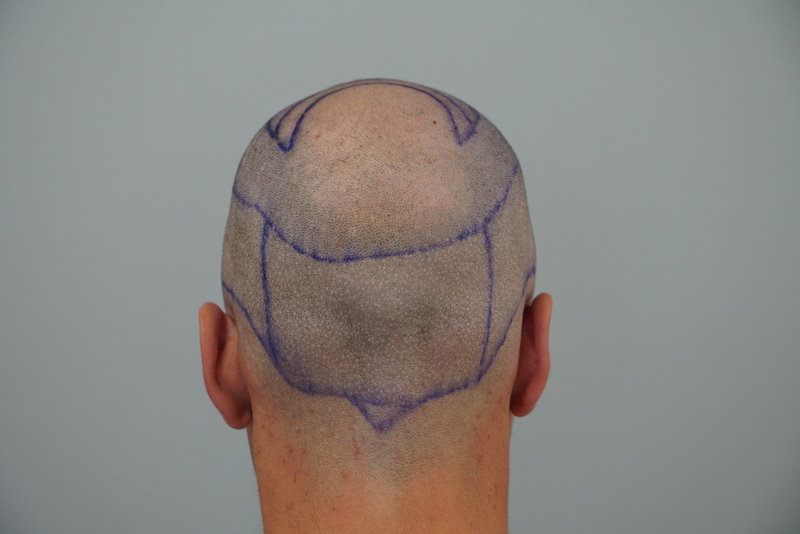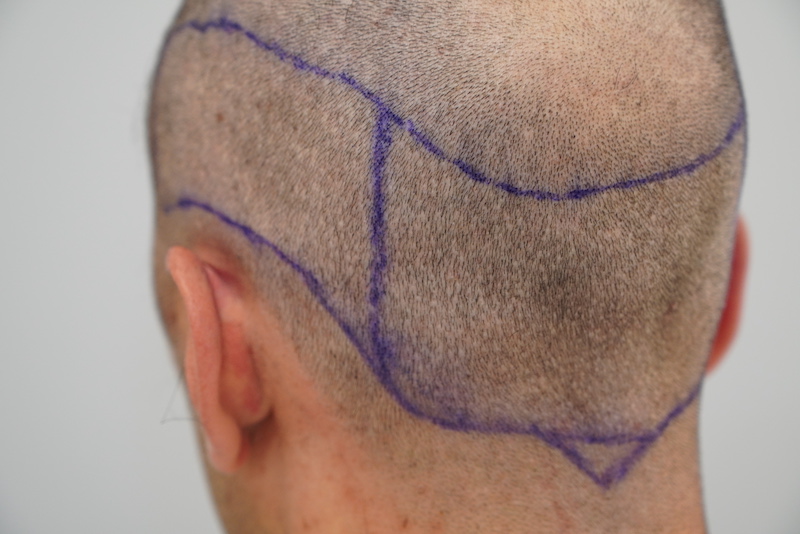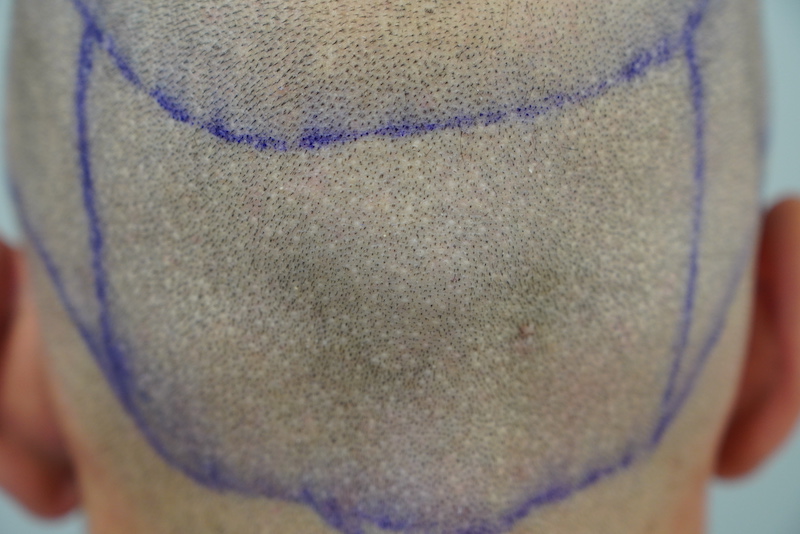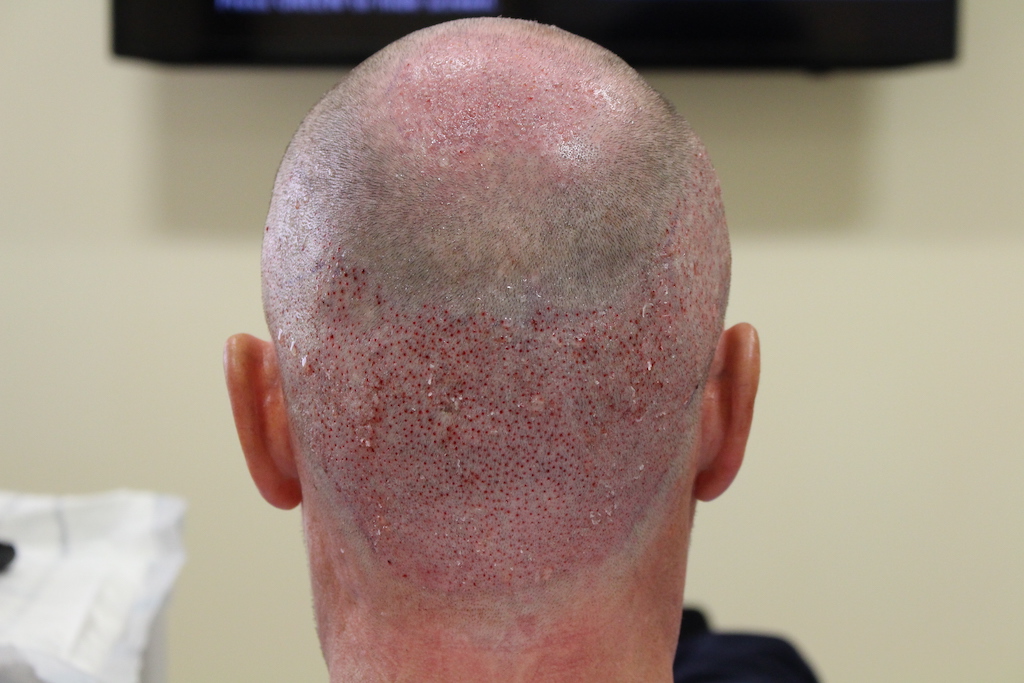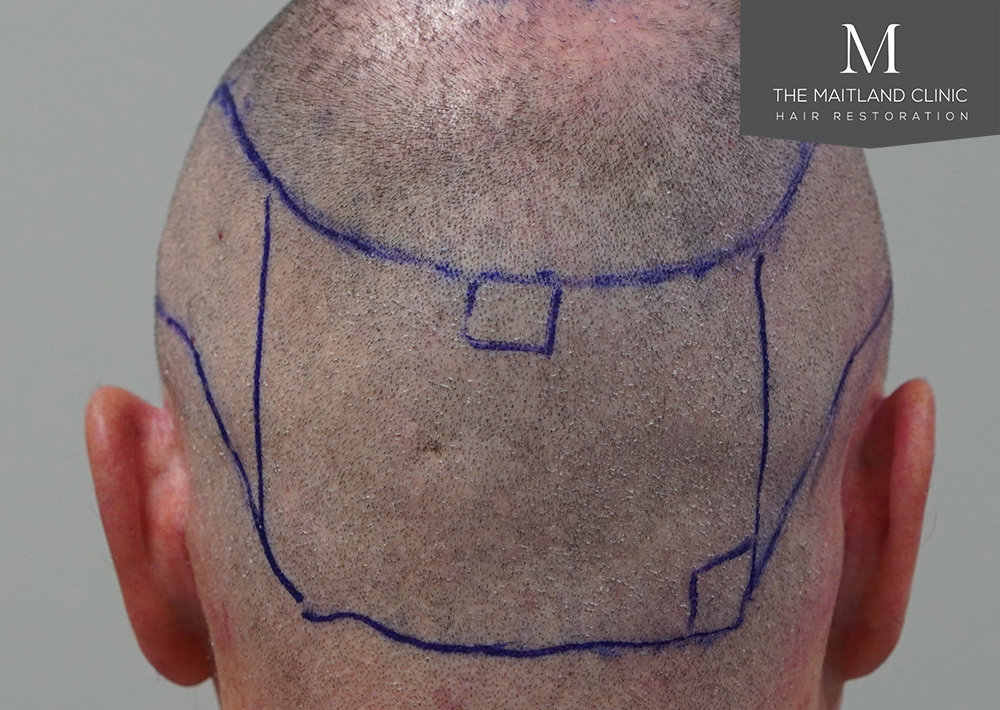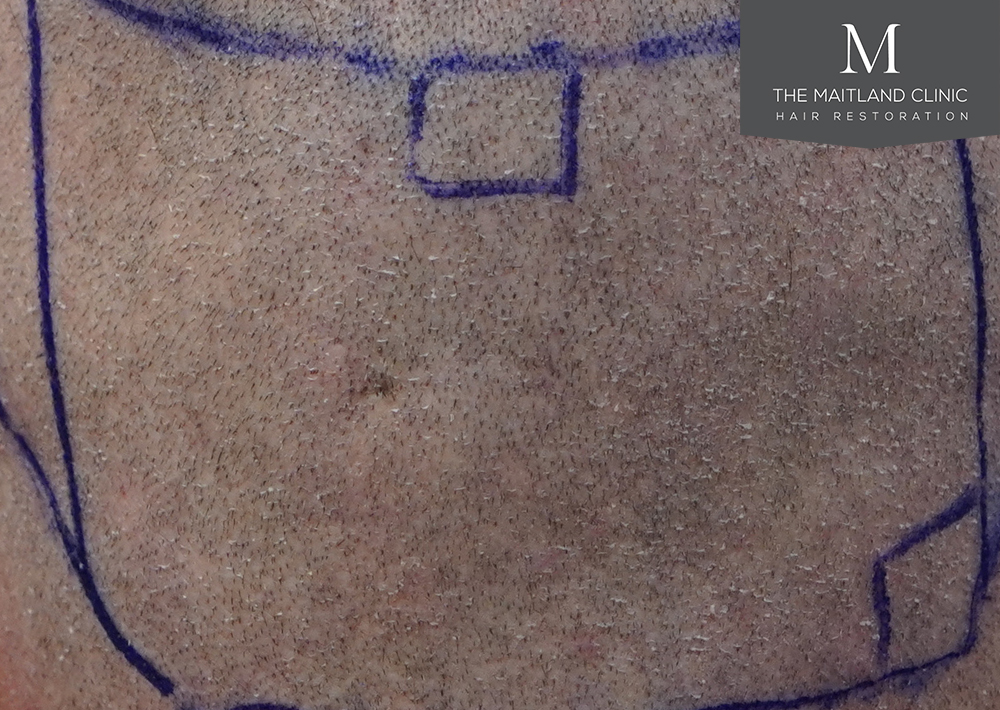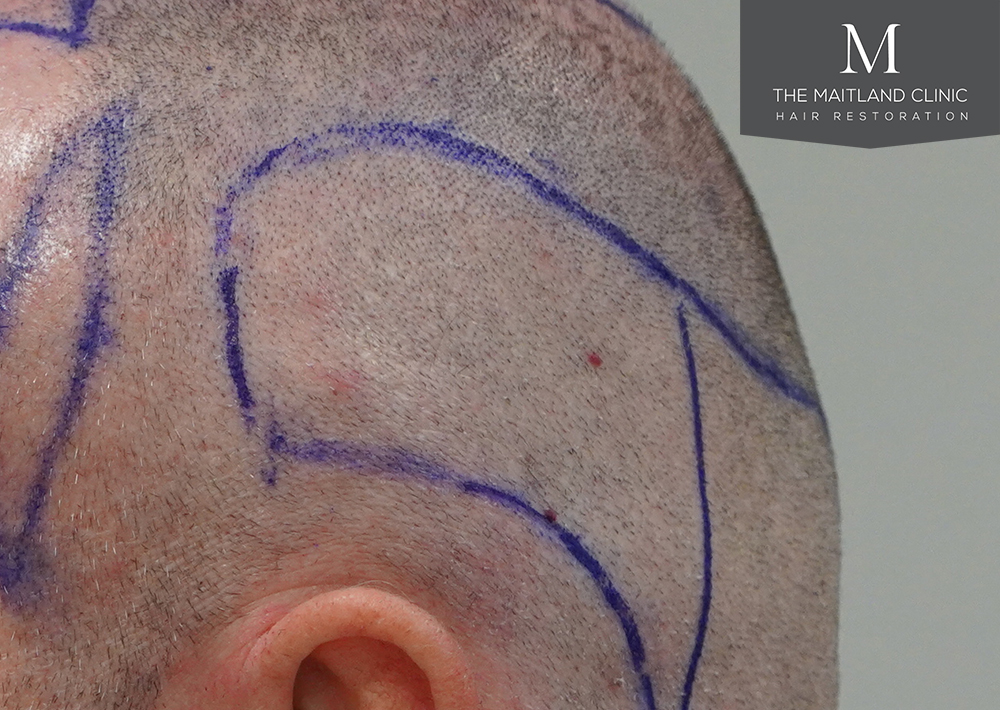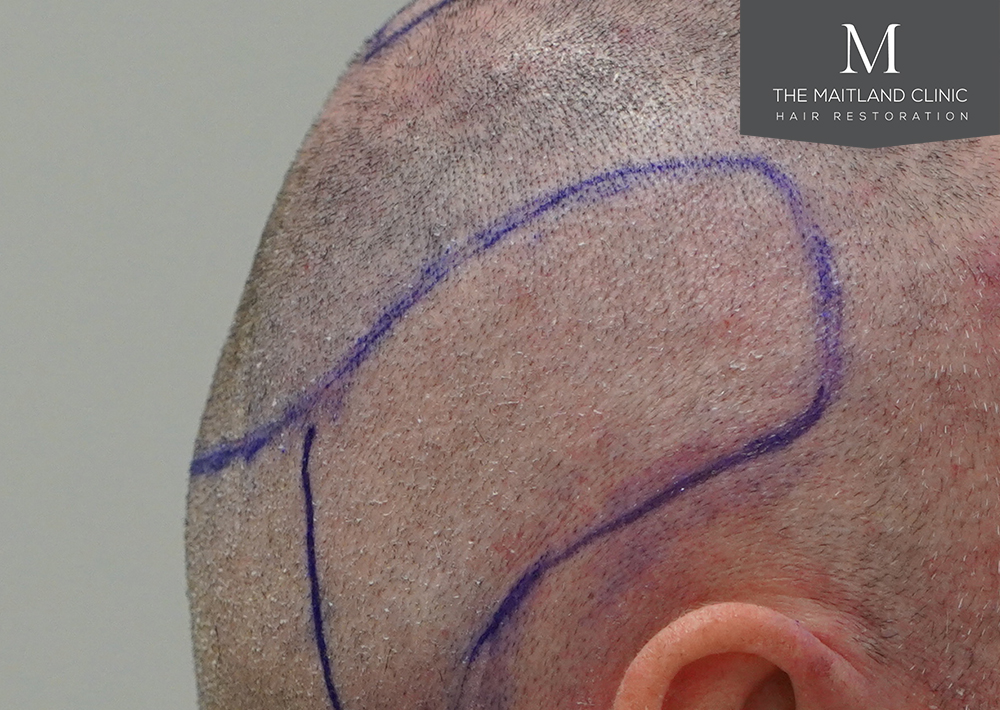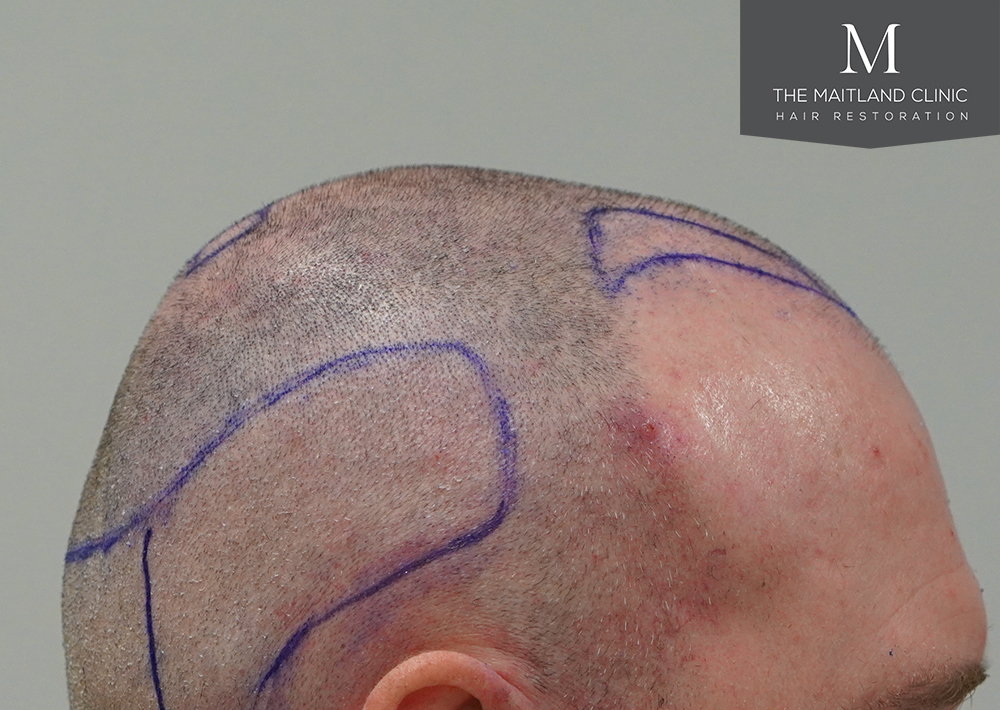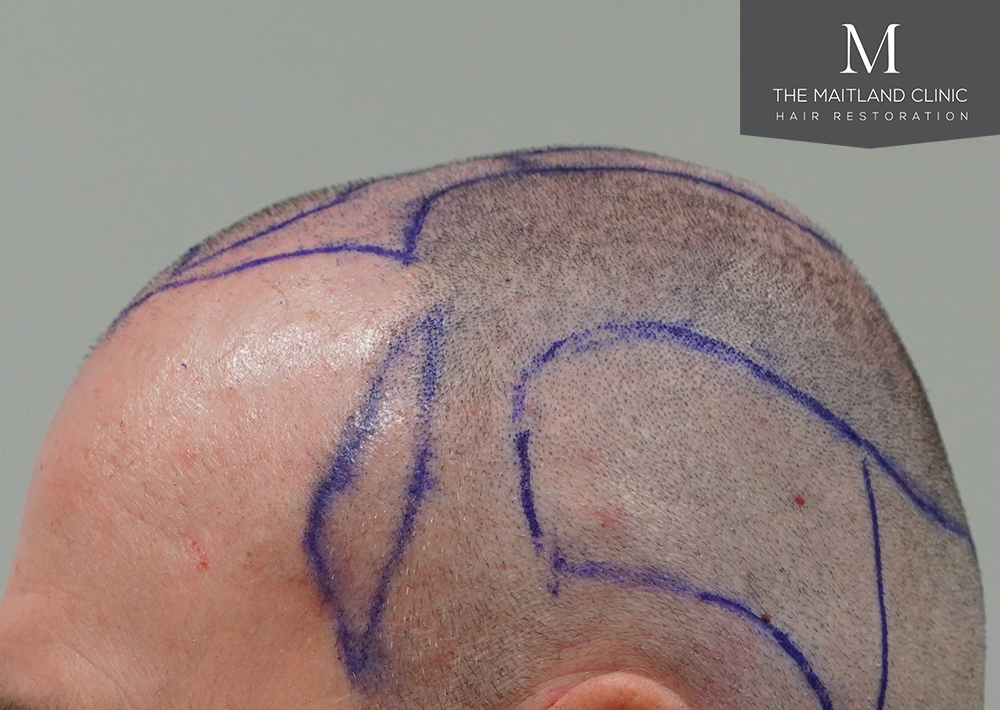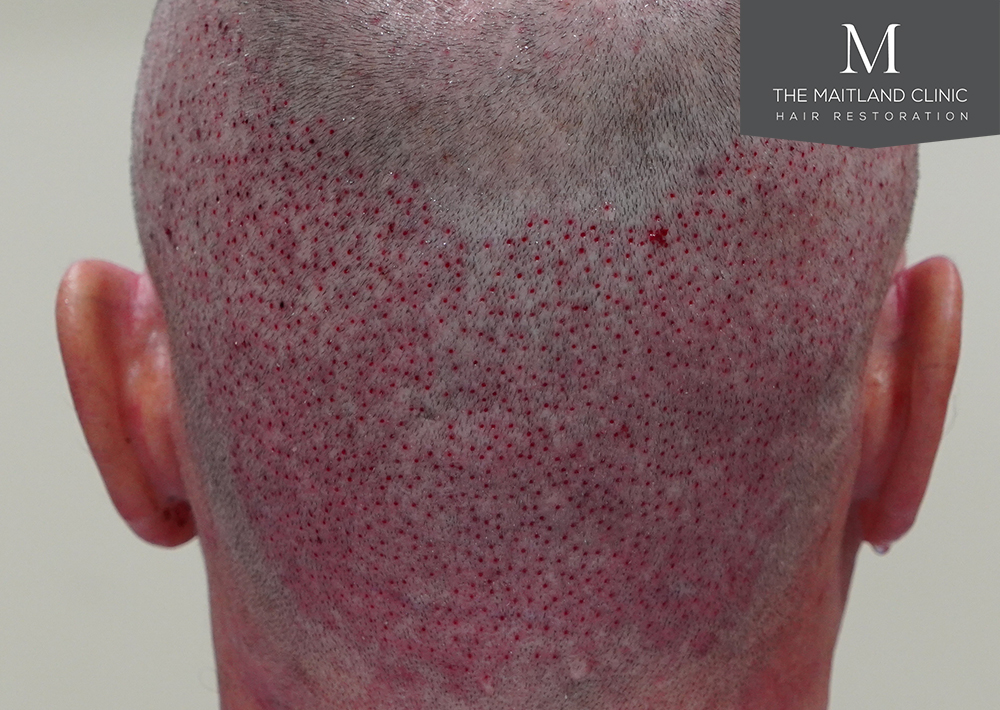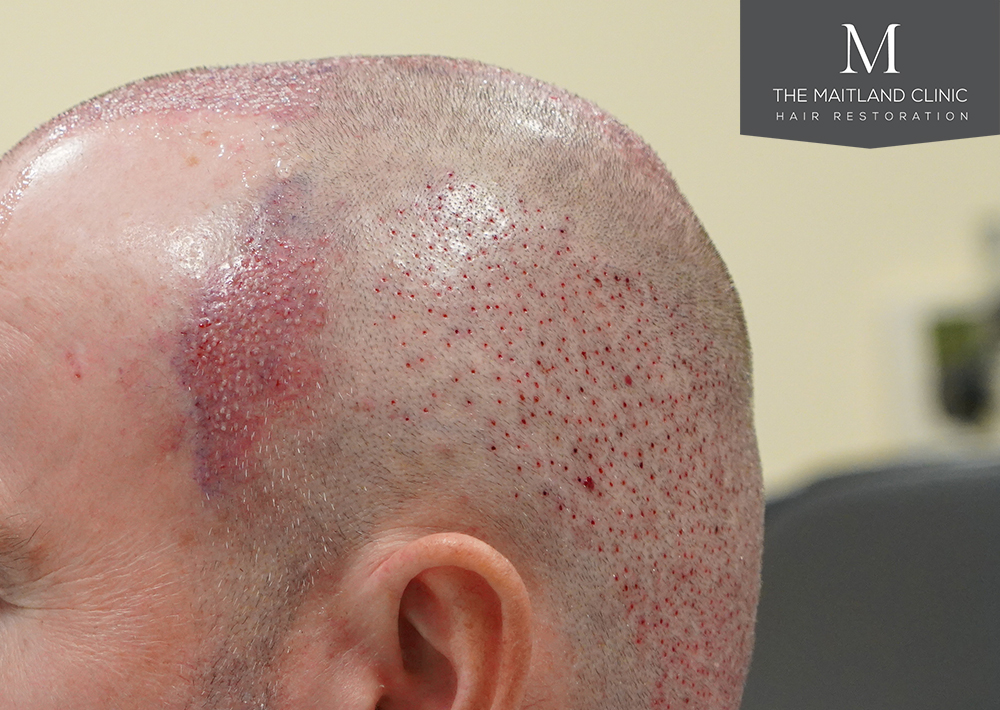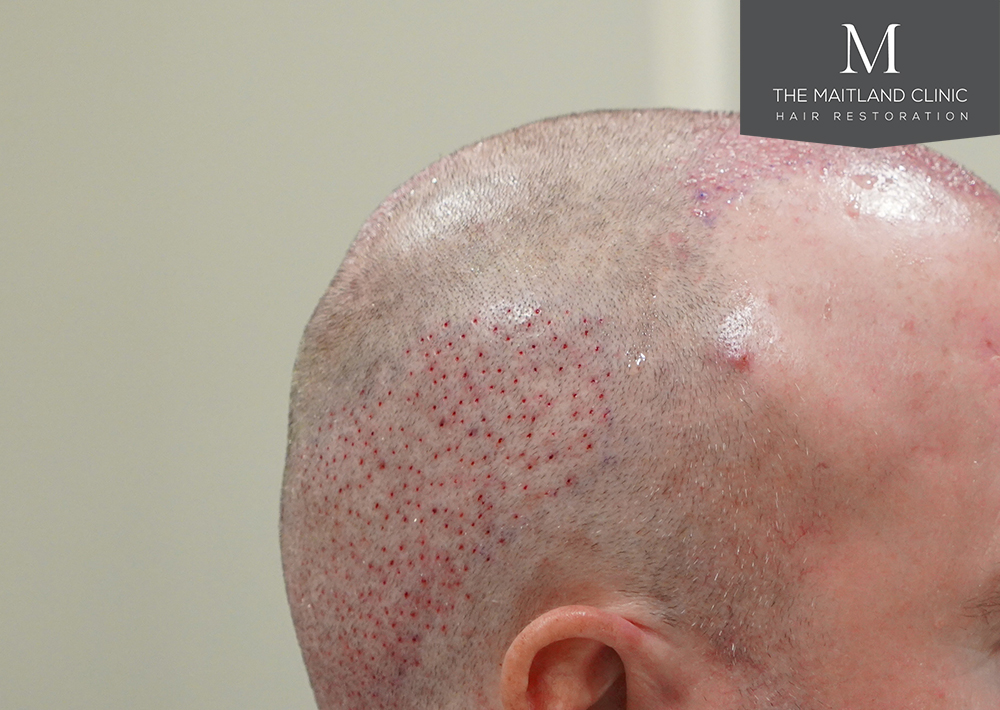Does an FUE hair transplant leave scars? (And 5 more common questions about FUE)
24th September 2018
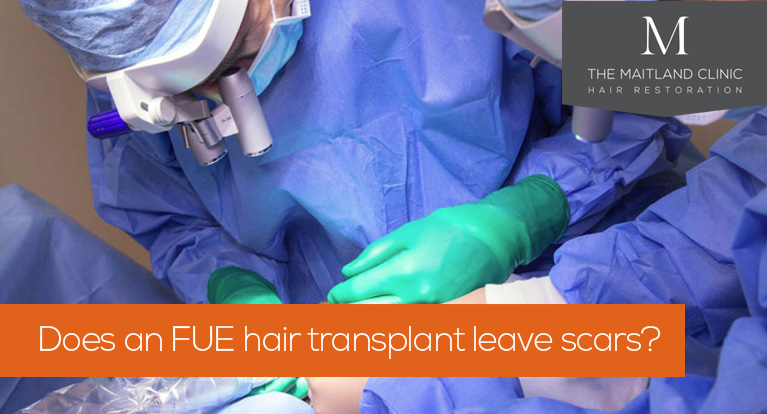
A common concern people have when considering an FUE transplant is whether they are likely to be left with scarring. At The Maitland Clinic we take every care to keep scarring to an absolute minimum in all our hair transplants – in most cases completely unnoticeable with hair worn above a grade 1 or 2.
But does an FUE hair transplant leave scars?
It is important to stress that there is no such thing as “scarless hair transplant surgery”. However A great benefit of the FUE hair transplant technique is that the risk of visible scarring is hugely reduced. Whereas the FUT technique leaves a linear scar, an FUE transplant performed by a reputable surgeon leaves only a series of tiny dot scars on the scalp, which are so small (typically less than 1mm) as to be scarcely noticeable.
When FUE grafts are harvested cautiously, and in a diffuse pattern, from the “safe donor zone” (the zone of scalp hair that is not at risk of future balding), the risk of noticeable scarring is low. If too much hair is taken from the donor area or if the extraction pattern is not sufficiently irregular or diffuse, there is a high risk of detectable thinning and scarring.
This is one of the reasons that all FUE extractions (or donor harvesting) should be performed by the hair transplant surgeon and not an unlicensed technician. An artistic eye, an understanding of the progressive nature of hair loss and long term future planning are all essential in order to reduce the chance of detectable scarring from FUE.
Hair transplants involve transferring healthy hair grafts from parts of the scalp where hairs naturally continue growing for life (the ‘permanent’ or ‘donor’ areas), to the parts affected by hair loss (‘recipient’ areas).
There are two main techniques: the FUT (Follicular Unit Transfer) or ‘Strip’ hair transplant technique involves removing a strip of donor skin from which to dissect follicular units. This leaves a linear scar, which generally requires hair to be worn at grade 4 or longer to be concealed.
In an FUE (Follicular Unit Extraction) transplant, by contrast, the donor area of the scalp is shaved and follicular unit grafts are extracted individually using a 0.8mm to 1mm ‘punch’, and then placed into microscopic slits in the recipient area. When carefully executed, this leaves a series of tiny dot scars which are barely visible to the naked eye, and certainly not noticeable in everyday life.
Here are some more questions about FUE that we’re often asked at The Maitland Clinic:
Is an FUE hair transplant painful?
An FUE hair transplant – like an FUT procedure – is virtually pain free. It can be undertaken with just a local anaesthetic. We employ a number of techniques to reduce the stinging sensation of the local anaesthetic injections. Once these are done, the transplant procedure should be pain free. Any discomfort in the days following the procedure can be managed with painkillers.
At The Maitland Clinic we make every effort to make the day of your procedure more like a visit to a health spa than to a surgery. During the process you can read, watch movies or play on an iPad. Some patients have even said their treatment day was their most enjoyable ‘me-time’ in years!
Does a beard or facial hair FUE transplant leave scars?
As with a scalp FUE procedure, a beard or facial hair FUE transplant will leave only a series of tiny dot scars in donor areas. These can be virtually invisible and our patients have always been amazed at how quickly the dots heal and how unaware they are of their presence.
Can I have a short haircut after an FUE transplant?
Yes, absolutely. Because it leaves minimal scarring FUE is ideal for people who like to keep their hair short, such as a number 1 or number 2 haircut – whereas FUT leaves linear scars which patients need to cover with longer hair (grade 4). Here’s more on when you can use clippers and how short you can go.
Is an FUE hair transplant permanent?
An FUE transplant is a permanent solution to hair loss in the sense that the hair follicles transferred to areas of loss are genetically programmed to continue growing for life. However, over their lifetime some patients may require more than one procedure to maintain their desired overall look.
Case Study One
Take a look at this case study of a patient who returned to The Maitland Clinic for a second FUE procedure. In the first procedure, Dr Ball harvested 2101 grafts to cover the front and middle scalp. He was very happy with his results and decided to return to extend the coverage towards the anterior crown. The patient had been using finasteride and minoxidil for several years and it was felt that his hair loss was stable.
Dr Ball used 1568 grafts in the second procedure to add further density in the mid scalp and extend the coverage into the anterior crown. To carry out the second procedure, Dr Ball had to shave the donor area. This photo set shows typical scarring after 2101 grafts were harvested from the first procedure. FUE scarring is variable from patient to patient but will usually be visible if the hair is shaved to a grade 0, as in this photo set. Some patients with different skin and hair colouring will have less obvious white dot scars but it can be difficult to predict the final appearance of an FUE donor scar.
Post op procedure one, pre shaved donor.
Pre-op procedure two. Donor shaved after 2101 grafts by FUE.
Case Study Two.
This patient returned to The Maitland Clinic for a second FUE at the end of 2020. His first procedure was in 2018 for 1831 grafts and his results can be seen on our results gallery here.
Due to the challenges of trying to cover the frontal area and the crown, only a modest density was possible in the first procedure. He wanted to return to provide greater density into the hairline, crown and rebuild his left temple point, which had receded. The photos below show immediate post-op after the first procedure and the donor area shaved prior to the second procedure. In the second procedure Dr Ball harvested 1354 grafts.
Immediate post-op, procedure one.
Pre-op procedure two. Two years after 1831 grafts by FUE.
Immediate post-op. Further 1354 grafts by FUE.
What other side-effects are possible with an FUE transplant?
There can be some minor side effects associated with hair transplants such as bleeding, itching, swelling and bruising. However, with the correct aftercare such irritations will be short lived and will not last more than a few weeks.
How long will it take to recover from an FUE transplant?
Our usual advice for an FUE transplant is that you will be able to return to work 7-10 days after the procedure with no visible evidence (apart from your short haircut) that any kind of surgery has taken place.
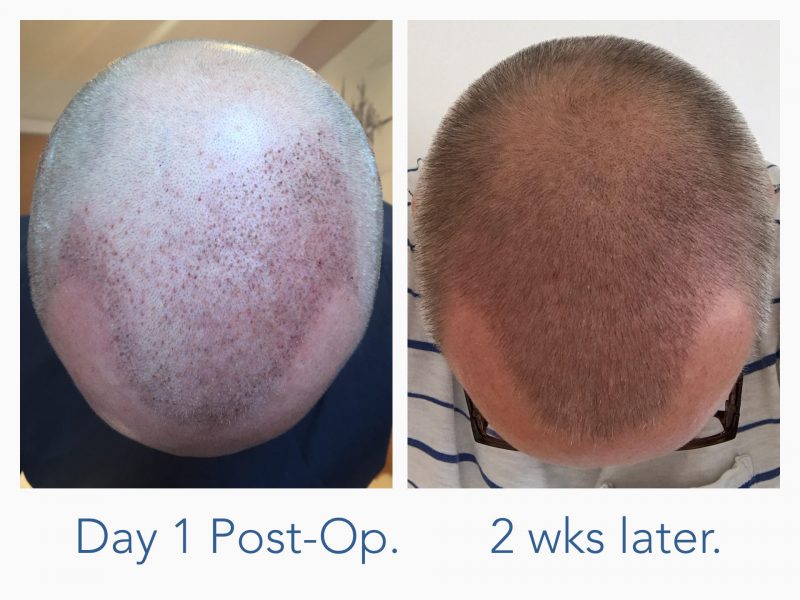
Returning to work after 2 weeks post-op FUE hair transplant recovery by The Maitland Clinic
The image above shows Before and After photos of one our FUE patients – one day post-op and two weeks later. However, even after just six days the red marks on the scalp had virtually disappeared. You can see more images and read his story here.
At The Maitland Clinic we pride ourselves on providing a great aftercare service. After your procedure we’ll provide you with everything you need to take care of your scalp and your new hair grafts, including medication to manage any initial discomfort, sprays which optimise the healing of the grafts, and instructions on washing your hair.
But we think aftercare should extend far beyond that. We encourage you to stay in contact with us for ongoing support and help on monitoring your hair growth progress, and caring for your scalp.
You’ll be able to return to us for regular check-ups and maintenance procedures, giving you peace of mind and a lifetime of professional care.
How to decide if an FUE hair transplant is right for you
The FUE hair transplant technique has many benefits – including the fact that there is minimal scarring – whereas the alternative FUT method leaves small linear scars which will need to be covered by hair.
However, the FUE procedure is not for everyone, and FUT also has its own advantages. For patients who require a larger number of grafts, or who don’t want to shave their heads, FUT may well be the better option.
Every patient is unique and factors including your age, the quality of your donor hair and considerations about future hair loss will all affect the decision about choosing the right hair transplant procedure – or indeed non-surgical option – for you.
At The Maitland Clinic we can give you honest, one-to-one advice about the different hair transplant procedures, talk you through the process and give you realistic advice on the results you can expect to see.
To arrange a consultation please contact us, or call on 02392 706 122.


